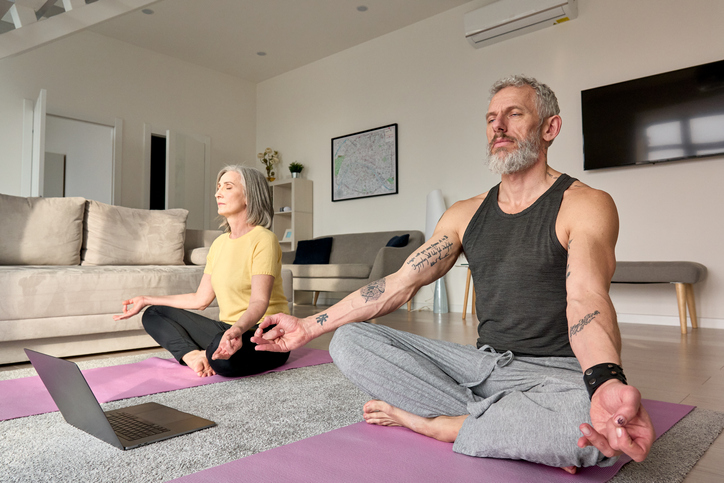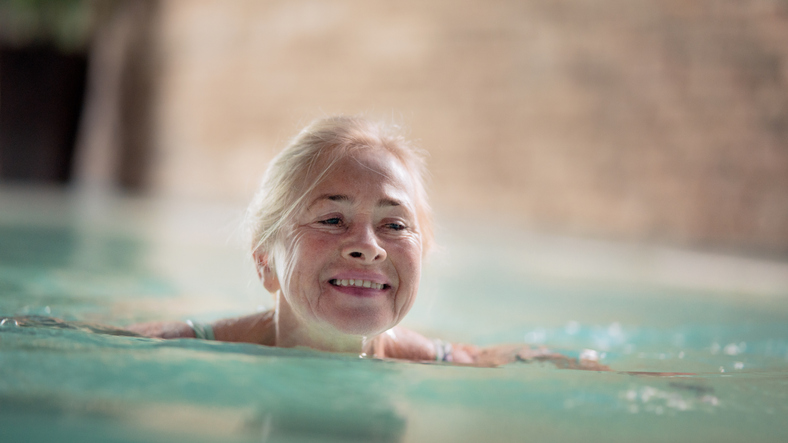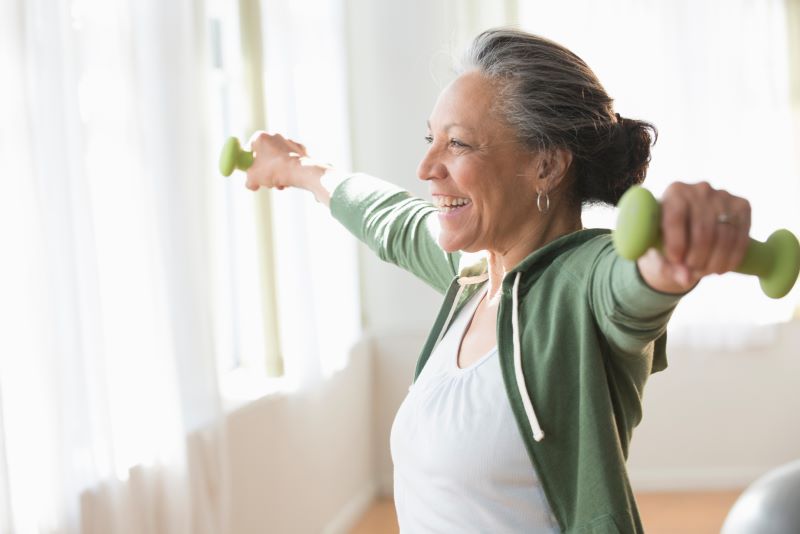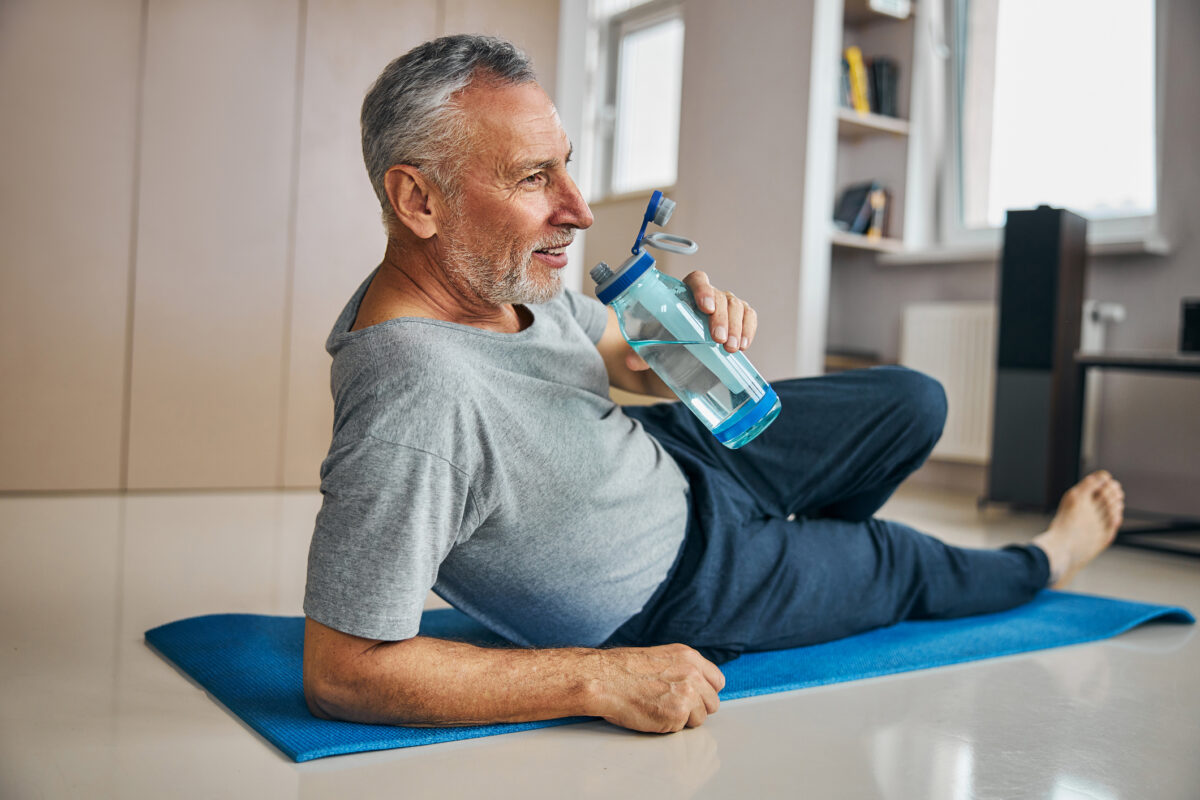Now that the New Year is here, you may be ready to make some changes to become more fit and healthy. It’s easy to get so excited about new fitness goals that you try to resume your best workout routine from 10 or 20 years ago. That’s not always a good idea, though.
Even if you’re in good shape, your body isn’t the same as the one you had in your thirties or forties. For one thing, you probably have less muscle mass. Your metabolism, the process of converting food and drink into energy, may be slower, too. As you age, you need to tailor your workout routine around specific fitness goals, considering any physical limitations that could cause injury when you exercise.
The good news is that, with regular exercise, you can:
- Build muscle mass
- Maintain or lose weight
- Find relief from chronic pain
You’ll also feel better mentally and emotionally since exercise floods your brain with feel-good endorphins. Working out regularly also helps you feel productive and focused on fitness and health.
Not sure where to begin? Here are five tips for choosing the best workout for your body and why no one exercise regimen works for everyone.
1
Know the Results You Want
Is your fitness goal to lose weight? Maybe you’re looking to increase muscle mass, which decreases about three to eight percent every decade after the age of 30. Or perhaps you want to gain better balance to prevent falls as you age. Your individual fitness goals are the key to choosing the right workout.
2
3
For example, the workout routine for someone looking to lose weight is very different than for someone trying to build muscle, says doctor of physical therapy Sara Mikulsky, who is also a certified personal trainer and owner of Sara Mikulsky Wellness Physical Therapy in New York.
“When you’re just getting back to working out or have never worked out, people think cardio is the way to go, but strength and resistance training are just as important,” says Mikulsky. “Strength training increases muscle mass, which requires more oxygenation. As the muscles get large, they require more blood and oxygen to move. So, if you couple strength training with cardio, your cardio will actually be more effective and you will burn more calories.”
1
Consider Working With a Personal Trainer
Even if you’re not ready to work with a personal trainer regularly, you can benefit from at least some professional guidance to help achieve results. “If someone is new to exercise, I recommend speaking to a physical therapist or personal trainer for help at least once,” says Mikulsky.
2
3
Working with a personal trainer can incorporate exercises that help your heart and muscles work together for optimal results. That way, you can achieve results faster and avoid injury from exercises that could aggravate a lower back, hip, knee or other problem area.
“Learning to exercise and move correctly can reduce pain in a part of the body,” says Mikulsky. “When you teach someone how to do this, they have control over their pain. This can help treat the pain both physically and mentally, breaking the cycle of chronic pain and the fear and depression associated with it.”
1
Choose Exercise You Enjoy
Swimming is a fantastic workout, since the activity increases your heart rate and builds stamina while toning and strengthening muscles during low-impact exercise. If you love to swim, swimming could be a good basis for your workout routine. However, if you don’t enjoy swimming, you could set yourself up to fail by forcing yourself to do an exercise you dread.
2
3
Choosing exercise you enjoy makes you more likely to stick with your workout routine, says Mikulsky. “If you like to walk, make it about walking. Don’t try to do things you don’t like because chances are you will fall off and not do the exercise,” she says.
1
Explore Group Classes
Group classes can help you ease back into working out or expand your current workout routine. You’ll also stay socially engaged, which is crucial to mental health and aging well.
2
3
Many gyms offer group exercise classes such as yoga, strength training, water aerobics and Zumba, which blends exercise and dance for a fun cardio workout. There are also classes specifically for older adults, like Silver Sneakers, a health and fitness class for people 65 and older.
By trying different classes, you’ll learn how different types of exercise affect your body and mood. If you have pain, weakness or physical issues such as lower back problems or hip or knee problems, make sure you ask the instructor before class about ways you can modify certain positions or exercises to avoid injury.
If you’re not ready to go into the gym yet, don’t worry. You’ll still have other options for classes.
1
Stream Virtual Workouts
If you want to work out at home, you’ll find both free and fee-based virtual workout apps, classes and instructional videos online. Some apps even come with a certified personal trainer for customized sessions. You can also access online Silver Sneakers classes from home. Many yoga classes are available virtually, and the same goes for cardio, Pilates, Zumba and strength training sessions.
2
3

How to Choose the Best Workout for Your Body
Now that you have a few things to think about when choosing exercises, start out with at least one or two, based on your fitness goals and guidance from a personal trainer or physical therapist. Here are some popular types of exercise and their benefits.
Walking
The Centers for Disease Control and Prevention (CDC) recommends getting at least 150 minutes of moderate-intensity aerobic activity a week. You can achieve that level of intensity by walking briskly, such as covering a mile in about 15 minutes. In addition to helping you manage weight, walking regularly lowers the risk of heart disease, stroke, Type 2 diabetes and some cancers.
By walking 30 minutes a day, five days a week, you’ll get 150 minutes of aerobic activity a week. If you’re not used to walking, start out slow with ten-minute walks and work up to longer walks as your endurance increases.
Strength Training
For strength training, you can work out with dumbbells or heavier weights, resistance bands or on the exercise circuit machines at the gym. You can even use your own bodyweight as resistance to build strength, especially at the core, which is the group of muscles that stabilize and control the pelvis and spine.

“Core strengthening is great for all ages and can always be modified to age, injury and fitness level,” says Mikulsky. “Building muscle strength, core stability and maintaining flexibility can prevent injuries, fend off medical diagnoses and help prevent falls later in life.”
Good core exercises for someone 50+ might include planks or modified planks. You can also do bridges. To start, lie on your back with knees bent and tighten your abdominal muscles. Next, raise your hips until they’re aligned with your knees and shoulders.
Yoga
Yoga can improve general wellness, flexibility, mental health and balance. If you haven’t done yoga before, you may want to start with a gentle style of yoga such as hatha yoga or chair yoga. Let the instructor know of any injuries or physical limitations before class. That way, the instructor can help you modify certain poses to avoid injury.
Swimming
Swimming is a low-impact exercise that uses water as resistance while providing a great cardio workout. The benefits of swimming are many, including helping people lose weight or reducing chronic joint pain caused by rheumatoid arthritis or osteoarthritis.
Even swimming laps at a slow pace burns calories, strengthens muscles and provides cardiovascular benefits. Not a swimmer? You can still benefit from water exercise by participating in a water aerobics class that incorporates resistance and stretching.

Get Started on Better Health
Now that you know how exercise can benefit your physical and mental health, start exploring the best exercises and workout routines for your body. Before you begin a new workout routine, make sure you get cleared by your doctor first. Ask about areas of your body that could be easily injured and types of exercise that may help certain health conditions.
Maybe you could begin with a daily morning walk or a cardio, strength training or yoga class. Your gym membership might even include a personal training session, or you may want to hire a personal trainer to help achieve your fitness goals.
Do you have a favorite exercise or workout routine that you want other readers to know about? Share your exercise experience and recommendations in the comments.







How about a gym
I have been trying to find a daily exercise routine that I can do at home on my schedule. thanks for the suggestions. I’ll check them out.
I will be 76 on the 17th and I do walk and cycle in our resident exercise room. I do want to add learn to swim but sometimes my feet and legs cramp. I have done water aerobics and really enjoyed it and also yoga.
I would love to learn to swim with persons of my age and, more importantly an instructor with patience and experience working with seniors and all races.indiscriminately.
I am 55 y/o with scoliosis and arthritis. I began doing reformer Pilates a few years ago and began consistently doing it about a year and a half ago. It is relatively easy and soooo effective! I have strength, flexibility, good balance and abs now! I lost 46 lbs and have never felt better! The reformer machine allows for cardio as well with the rebounder attached. I highly recommend reformer Pilates as it is not painful or too difficult for my limitations and I really enjoy it.
I enjoyed this article very much and am motivated by it to get busy with an exercise program. Thank you to all the commenters; I wrote down some of the information and will check them out.
Hi I’m 73 years old. I believe moving the body is so important. I have done yoga classes fir the past 20 years 2 per week. Lately I found yoga on utube on my tv. Did the 30 day challenge with Adrene. Did it every day. Loved it. It easy enough and gentle. I’m now saving myself money by continuing with utube yoga. Give it a try
More information
Yes this was very helpful for me when choosing an exercise plan that mught work best for me
It’s a vicious cycle for me. I dont like being in the water for anything so water exercise’s are out for me. I love to walk!!! However, with OA in my neck, spine, pelvis, hips and knees, it makes walking difficult, then add COPD to this and there’s goes your air, and you have the cycle. Even wearing my portable oxygen, the OA still limits what I can do, the pain in the spine burns until I sit. What exercise’s can I do that wont make me out of breath and cause more pain.
Sounds like Chair Yoga would work for you. After a while you may be able to advance to some gentle yoga on the mat. It’s worth a try!
I have always enjoyed exercise, swimming, walking and biking. Also some strength training. Thank you for the informative tips.
I am 77 yrs old and enjoy water aerobics twice weekly. Thanks to the Noom Program, I changed my eating habits, I’ve lost 11 pounds in 6 months. My blood sugar is also within range.
I’ve used Aqua Jogger Water aerobics for over 20 years. Buy an inexpensive battery operated boombox put in the CD and get a great workout in the pool.
At 85 I usually find that after lunch I need or feel like taking a nap. But when I push that idea out of my head and go to the gym, I always feel much better and can do things in the evening that I might otherwise put off. I started with a personal trainer who stressed CORE exercises and that helped lower back pain that I was experiencing. My wife and I usually go to the gym together and that helps when either one feels like slacking off. Strength exercises are my choice since I have two sons that want to go fishing and hunting and I am able to still participate with them and not feel like I am slowing them down. It is not the fountain of youth but it is the extender of the quality of life in my case. Hope this helps get a few started. I did not start until I was in my fifties and am so glad I did. Good luck with yours.
I offer a FREE senior fitness class every Friday at 12 noon EST/9 am PST on Zoom. The class offers a great way to get/stay in shape during these unprecedented times. All of the exercises can be done sitting/standing and are safe for seniors of all ages. Of course, check with your doctor before participating in any exercise plan. Visit mamieduncangibbs.com to learn more.
I am a Dancer of a certain age, and attend Mamie’s class on Fridays at noon. It is a wonderful, safe & exhilarating class that gets you going for the day. Mamie is always encouraging and reminds us to keep hydrated. It is an age friendly class with no pressure. Just fun and a good workout.
Ms. Mamie gives an invigorating class on zoom . She works with us on all the major muscle groups and the hour goes by way too quickly. I’m so appreciative to have had a friend recommend the class to me . Kudos to Mamie!!!
What a blessing Mamie’s no cost zoom class is. She offers a full body workout (to fabulous music!) during which she is careful to offer modifications (even seated, if necessary) so everyone can participate. Considering her Broadway background, when Mamie teaches a fitness routine, I like to believe I’m part of the cast! As a woman of a certain age, I’m trying everything to keep it together! I am so grateful Mamie’s fellow performer and my friend Gail shared the Class link with me. It has become a very much anticipated integral part of my weekly fitness regimen.
Mamie’s class is wonderful for Everyone, and particularly great for Dancers who may not dance as much, but want to make sure their Placement is on point. A great way to keep it moving! Mamie, thanks for the gift!
Oh, and ‘if you make a mistake, who cares!’ … Mamie always says that, so there’s no need to feel pressured- so if you’re on the fence about it, carefully come on down and step into class!
I look forward to Mamie’s weekly class and wish she were able to add another! She offers excellent instruction that is rooted in physical therapy techniques. Thank you Mamie. You are very much appreciated!
Mamie Duncan-Gibbs is an excellent fitness teacher/coach for participants of all ages and stages of life. She makes movements safe, healthy fun, and joyful. .
Thank you for this article; it contained a lot of useful information tailored just for me! It’s certainly got me thinking.
Thank you for this very informative article. It helped me figure out where to start and then how to continue working out, after not being able to the past few years.
An excellent exercise for older adults is Dr Paul Lam’s Tai Chi for Health (Tai Chi for Arthritis for Fall Prevention). It’s evidence based and recommended by the CDC for fall prevention, which is a huge issue for our elders. It’s safe, it has many benefits, and it’s fun.
I am very interested in this opportunity for chance to improve my self
I have 2 accountability partners(we are in late 60’s, early 70’s age group) I meet at Planet Fitness MWF …first we walk on treadmill for 30 minutes and visit…then we do circuit machines doing 1 minute on each machine…then we do stretches usually with a ball …planks…sometimes we do coffee afterwards…it’s perfect!
I am 74 years old, and recently bought a treadmill for walking exercise when I am unable to it outdoors. What recommendations do you have regarding the speed, duration and times per week?
I’m 60 years, and I have taken Mamie Duncan-Gibbs class, and I really enjoy it. She concentrates on my core, which helps out so much, and her movements are simple, but so effective. Thanks Mamie
I quite like looking through a post that will make men and women think. Also, thank you for allowing for me to comment!
Rex – Thanks for reading!
Great information to digest!
Seniors need constant support!
Great information to digest for
seniors!